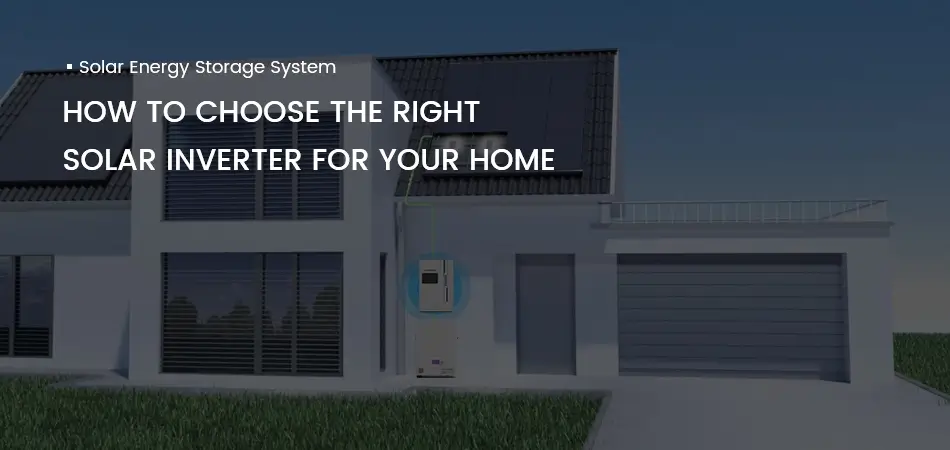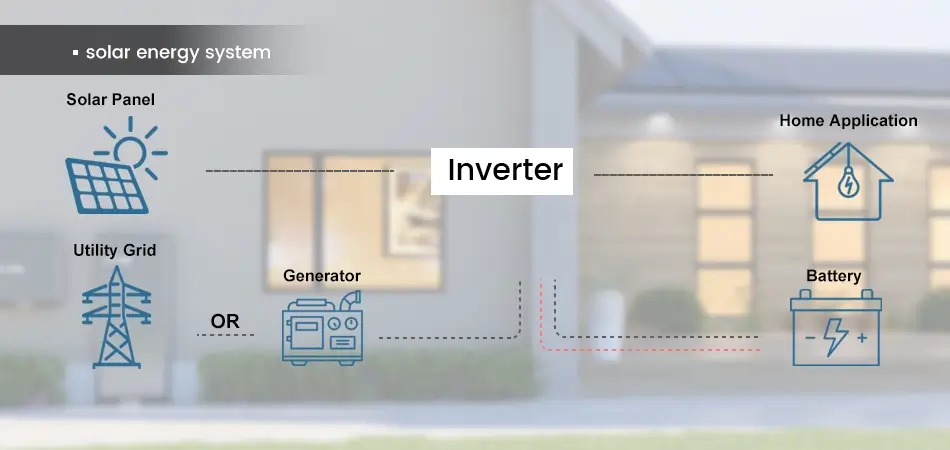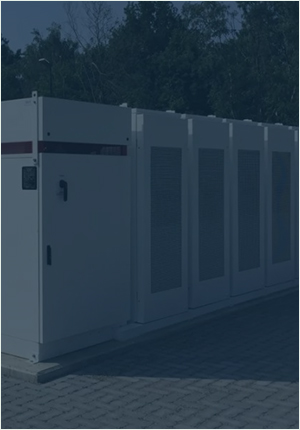2025-07-11 Author : CXJPowers
With the popularization of solar energy systems, solar inverters are increasingly recognized as critical components. While solar panels capture the sun's energy, choosing the right inverter is arguably the most crucial decision for unlocking your system's true potential – impacting efficiency, reliability, savings, and even future expansion. This guide demystifies the process, helping you navigate key parameters and types.

Solar inverters are crucial to solar energy storage systems. Its primary job is to convert the electricity generated by your solar panels into the Alternating Current (AC) electricity that powers your home appliances or feeds into the grid. But modern inverters do much more:
Optimize Performance: Continuously track the maximum power point (MPPT) of your panels to squeeze out every possible watt, even in partial shade or changing weather.
Ensure Safety: Monitor system performance, detect faults, and automatically shut down if grid issues arise (anti-islanding protection).
Provide Insights: Offer detailed monitoring of energy production (and sometimes consumption) via apps or web portals.
Enable Integration: Hybrid models manage battery storage and can provide backup power during outages.
That's why choosing the right solar inverter is critical to building a good solar energy storage system. Read on to learn how to choose an inverter.
Because of this, choosing the right inverter is critical to building a good solar energy storage system. Read on to learn how to choose an inverter.

Before diving into inverters, understand your home's power profile:
Calculate Daily Consumption: Check your electricity bills (usually in kWh). Find your average daily or monthly usage. Aim to size your solar system (and thus inverter) to cover a significant portion of this.
Consider Peak Usage Times: When do you use the most power? (Mornings, evenings?) This impacts inverter sizing and whether battery storage (needing a hybrid inverter) is beneficial for shifting solar power to peak times.
Account for Future Needs: Planning an EV? Adding an AC unit? Expanding the family? Factor potential increases in consumption into your system size planning now.
Size matters! Too small, and you'll clip valuable solar energy. Too large, and you waste money upfront and operate inefficiently at low output.
Match to Solar Panel Output: Your inverter's maximum AC output (in kW) should be close to the expected AC output of your solar array (after accounting for losses). Don't just match the DC panel rating.
Consider DC-to-AC Ratio: This ratio (Total Panel DC kW / Inverter Max AC kW) is key. A ratio of 1.1 to 1.3 is common. Why >1? Panels rarely produce their max rated power simultaneously due to heat, angle, shading. A slightly "undersized" inverter costs less and often operates more efficiently in real-world conditions, capturing more energy overall despite occasional clipping on perfect days.
Account for Environment: Hot climates reduce panel output and inverter efficiency. If you live somewhere very hot, consider a slightly higher DC-to-AC ratio or ensure the inverter has excellent thermal management.
Plan for Expansion: If adding more panels soon is likely, choose an inverter that can handle the extra capacity or is easily expandable (some allow adding external power units).

Here's where technology and specs come into play. Understand the different types and key parameters:
|
Inverter Type |
Primary Use Case |
Core Functionality |
Key Considerations |
Remark |
|
Grid-Tie |
Grid-reliable areas without batteries |
• Direct solar energy feed-in to grid • Grid-dependent operation (shuts down during outages) • Highest cost efficiency |
• No backup power capability • Requires grid certification (UL1741, etc.) |
Ideal for grid-stable regions with net metering policies. |
|
Off-Grid |
Areas without grid access (remote/islands) |
• Fully independent operation • Requires battery storage • Can integrate diesel generators |
• Highest cost (full storage system needed) • No grid export capability |
Requires deep-cycle batteries (e.g., LFP) sized for peak loads. |
|
Hybrid |
Backup power needs / TOU optimization |
• Intelligent switching between grid/battery/solar • Backup power during outages • Enables load shifting (Time-of-Use optimization) |
• 30-50% more expensive than Grid-Tie • Requires expert battery configuration |
Key value in AC Coupling (battery compatibility) and DC Coupling (higher efficiency). |
Technical Specification Comparison:
|
Evaluation Metric |
Grid-Tie |
Off-Grid |
Hybrid |
|
Battery Compatibility |
❌ Not supported |
✅ Required |
Optional |
|
Operation During Grid Outage |
❌ Shuts down |
✅ Continuous power |
✅ Continuous power |
|
Grid Export Capability |
✅ Supported |
❌ Not possible |
✅ Supported |
|
Typical Efficiency |
97-99% |
90-94% |
94-97% |
|
Cost (per kW) |
$100-200 |
$300-500 |
$200-300 |
|
Selection Logic: Stable grid → Grid-Tie (optimal cost) Energy independence → Hybrid (balanced functionality) No grid access → Off-Grid (only solution) CXJPowers has inverter supply. If necessary, you can click on our inverter category page for detailed information! |
|||
While this guide arms you with knowledge, consulting with qualified solar installers is non-negotiable. They will:
Perform a detailed site assessment (shading, roof angles, structure).
Analyze your specific energy usage patterns.
Recommend the optimal system size and inverter type/features for your home and goals.
Provide accurate quotes and explain warranties and maintenance.
Ensure safe, compliant installation and grid connection.
Choosing the right solar inverter involves understanding your energy needs, carefully sizing the system, comparing the pros and cons of different types (String, Micro, Hybrid), and scrutinizing key features like efficiency, warranty, monitoring, and MPPT capabilities. Don't underestimate this critical component. By doing your homework and partnering with a reputable installer, you'll select an inverter that efficiently converts sunlight into savings and powers your home reliably for decades to come. Your journey to energy independence starts with this smart decision!
-------------------
Let me know if you need further adjustments or additional details! We support OEM/ODM. Contact us now!
CXJPowers provides one-stop customized portable power supplies, LiFePO4/ternary lithium battery packs, emergency energy storage solutions, and supports OEM&ODM services.



